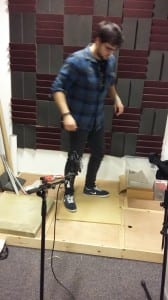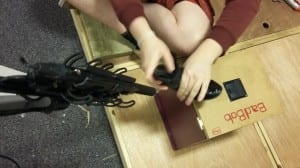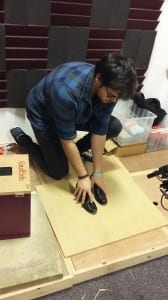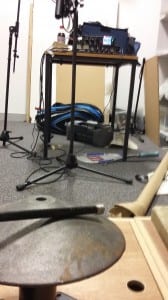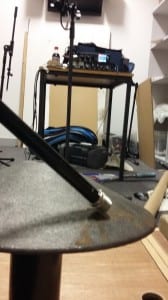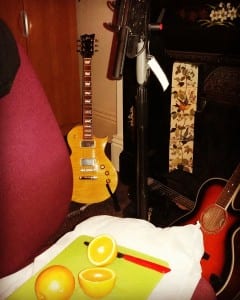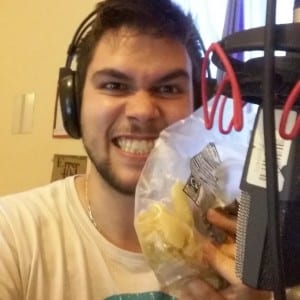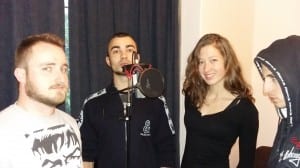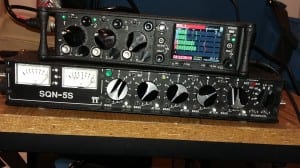 For the various effects that we required for this project we decided to create our own original effects. Recording various sounds in foley such as metallic hits with different objects, clangs and crashes which were later used as sword sounds and layers for the army’s equipment during marching. We also recorded a lot of footsteps on different surfaces with different shoes which were later transformed in to various elements of the soundscapes.
For the various effects that we required for this project we decided to create our own original effects. Recording various sounds in foley such as metallic hits with different objects, clangs and crashes which were later used as sword sounds and layers for the army’s equipment during marching. We also recorded a lot of footsteps on different surfaces with different shoes which were later transformed in to various elements of the soundscapes.
We used the Sound Devices 633 Field recorder for our Foley sound using the Sennheizer MKH 416 and some times combining the MKH with a AKG414 for variations and different perspectives.
We also used a few sound effects from the BBC Sound Effect Library in the Sound Theater such as the Thunder sound in Episode 1 and The Shotgun Blast including the initial door breaking layer of sound and one wind atmosphere.
The thunderstorm I created by adding a lot of reverb to a recording of a packet of macarroni being crumbled in addition with orange squeezes for a “leeky” sound. The fire was created similarly with the crunching of the packet and with a slight blowing in front of the diaphragm of the microphone, which is layered some cracking sticks.
The Swooshing sounds for example we recorded by Using Jake’s Squash Rackets. We swung them in front of the microphone during foley.
The magical sounds were created with the combination of Sound theater library effects and MIDI synth manipulation in pro tools.
HOW DID WE CREATE THE ARMY AND THE SHOUTS AND SCREAMS?
